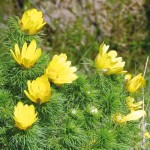Cranes, pheasant's eye and lots more
Nature Park Kyffhäuser » Cranes, pheasant's eye and lots moreEverything finds its place in the Kyffhäuser Nature Park. Flora and fauna include resting cranes from the north, salt-loving glasswort from the coasts of the North and Baltic Seas, feather grass from Asian steppes, swallowtails and needle sunroses from the Mediterranean area.
The diversity of the park's "guests" is matched by the wide variety of habitats. The region offers vast forests, orchards, rare dry grasslands, bare rocky outcrops and wetlands. The aqueous areas, such as the Golden Aue with the Kelbra reservoir and the Esperstedter Ried, provide a habitat for thousands of birds.
Bird Observation
The Golden Aue stretches across the northern reaches of the Kyffhäuser Nature Park. The Kelbra reservoir, built as flood protection, lies in the triangle formed by the municipalities of Kelbra, Berga and Auleben. Not just the 600-hectare water surface but the vast reed beds and grasslands too offer ideal conditions for more than 300 species of birds. In autumn thousands of cranes rest here before heading off on their long migratory flights. This area, an internationally important breeding and resting ground, has been declared a European bird sanctuary.
Enter the world of the cranes, gulls and white-tailed eagles. You'll find bird observation structures at the shore of the lake created by the damming of the river Helme in Kelbra.
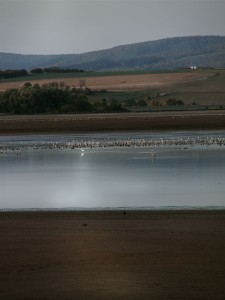
Thousands of birds rest at the reservoir
The bird tower on the eastern shore of the lake, directly between Kelbra and the Kelbra reservoir, serves dual purposes of species protection and bird observation. The walls of the former transformer station shelter nesting, sleeping and overwintering places for birds and bats. From the roof of the tower you'll have an impressive panoramic view over the reservoir.
On the southern edge of the Kelbra reservoir the three-meter-high viewing platform offers the best conditions for observing the up to 30,000 cranes that stop by in autumn to rest up for their long flight to southern wintering quarters.
The mobile bird observation station is parked on the shore of the reservoir. Here you can learn more about the bird species you spot. Find out how you can identify the penduline tit or the osprey. Call the nature park's offices at 0361 573916415 to get information about the mobile station's current location.
Expansive salt marshes with water-filled flood channels lie south of the Kyffhäuser range in the Esperstedter Ried. From the bird tower located right next to the bicycle path you'll be able to observe birds and enjoy the fantastic view over the Esperstedter Ried. You can see cranes and ducks and with some luck you might encounter a stork. During the migratory season flocks of geese populate the surrounding meadows, waters and fields.
The bird tower is always open. You can get to it by bike or on foot.
More information about bird observation is contained in the following brochures:
Where forest and steppe meet
Forests abut steppes in the Kyffhäuser hills, which is also home to the Kyffhäuser Monument. Contrasts abound where the steep north-facing slopes are covered with beech forests and the barren steppe grasslands are nearly treeless. They harbor luminous flowery treasures such as the bright yellow pheasant's eye. Altogether more than 1,300 species of plant thrive in this place which boasts natural resources unique to Central Europe.
Where salty treasures spring up
The Esperstedter Ried in the Diamantene Aue (Diamond Meadow) has the largest inland salt marshes in Thuringia. We meet up here with rare flora and fauna which can live in salty conditions. Because salt was as valuable as gold in the Middle Ages, salt extraction and production shaped the development of the city of Stadt Bad Frankenhausen and the nature park region.
Where the wildcat prowls
Large, dense beech forests cover the ridges of the Hainleite hills. The cool shell limestone soils are carpeted with wild garlic in the spring. The rather shy wildcat finds one of its few refuges here in the vast and practically undisturbed beech forests.
Where a river cuts through hills
The Wipper gap is very much like a canyon. The small Wipper river once buried itself in the hills and carved out steep limestone cliffs on which you can clearly make out the layers of rock. The area around the Wipper gap is known also for its rich variety of orchids.
Farmland, forests and grazing pastures alternate on the red sandstone Windleite hills. Sandy dry grasslands, rare in other parts of Thuringia, are woven into this landscape.
Other plants and animals in Kyffhäuser Nature Park


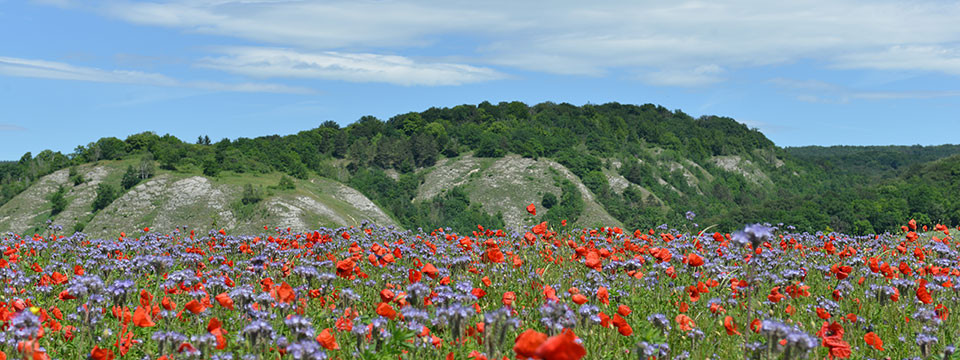
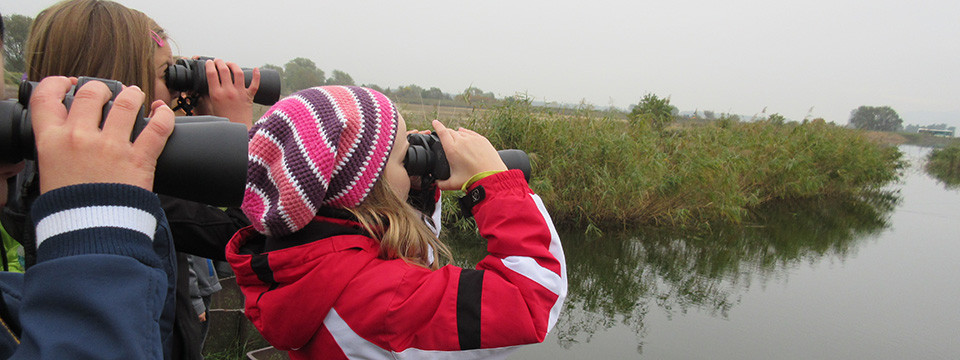
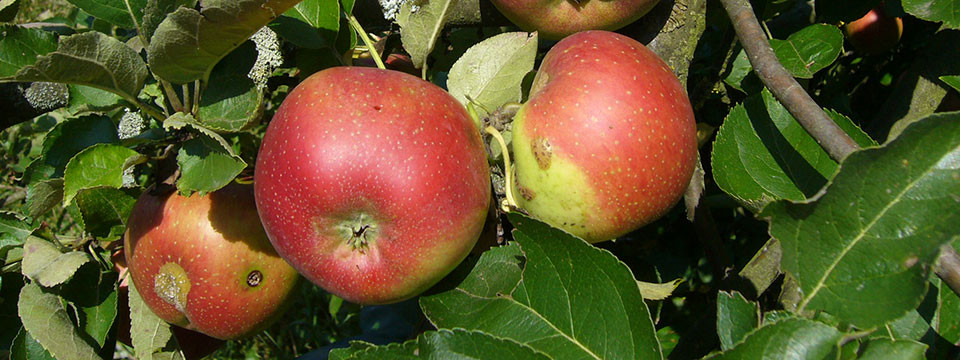

 Dry grasslands
Dry grasslands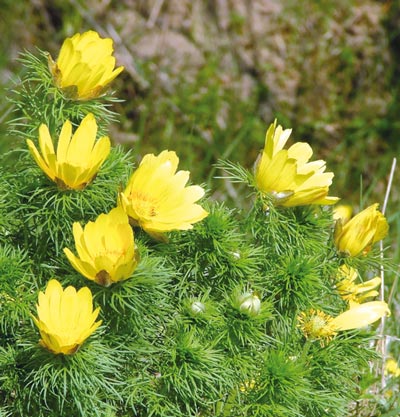 Springtime pheasant's eye
Springtime pheasant's eye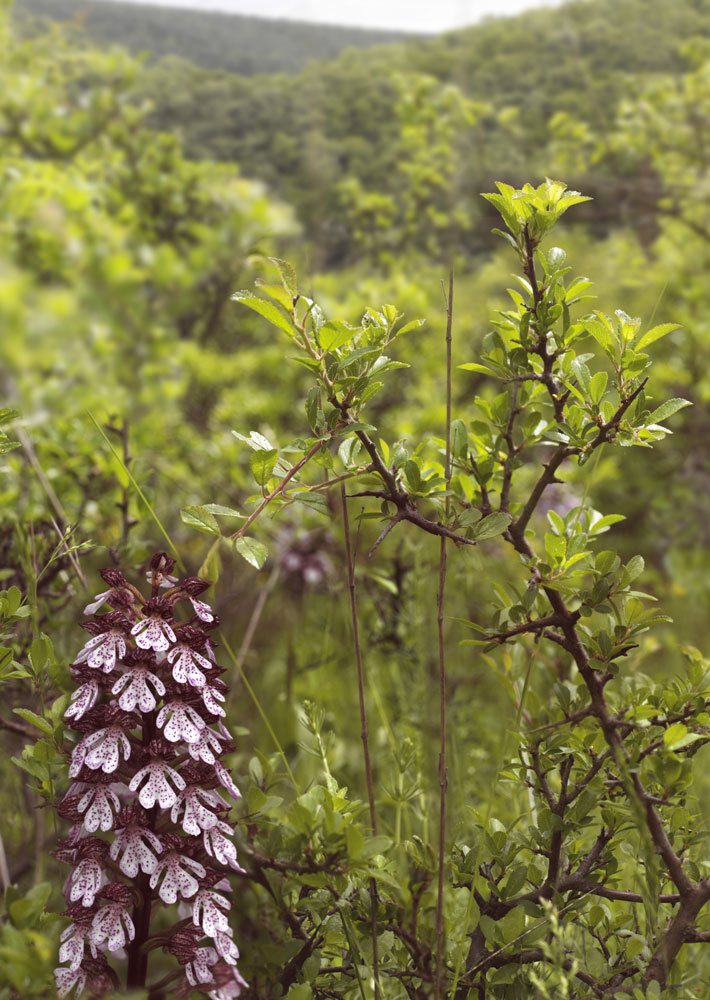 Orchid diversity
Orchid diversity